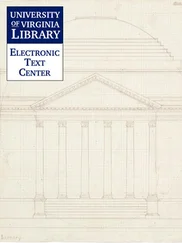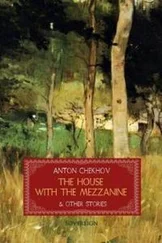Death on the Air and Other Stories
Ngaio Marsh

Copyright Copyright Foreword Roderick Alleyn Portrait of Troy Death on the Air I Can Find My Way Out Chapter And Verse: the Little Copplestone Mystery The Hand in the Sand The Cupid Mirror A Fool About Money Morepork Moonshine Evil Liver Part One Part Two Part Three My Poor Boy Keep Reading About the Author Also by the Author About the Publisher
HarperCollins Publishers
77–85 Fulham Palace Road
Hammersmith, London W6 8JB
www.harpercollins.co.uk
First published in Great Britain by HarperCollinsPublishers 1995
First published in the USA as The Collected Short Fiction of Ngaio Marsh by International Polygonics Ltd 1989
Copyright © Ngaio Marsh (Jersey) Limited 1989
A catalogue copy of this book is available from the British Library.
This novel is entirely a work of fiction. The names, characters and incidents portrayed in it are the work of the author’s imagination. Any resemblance to actual persons, living or dead, events or localities is entirely coincidental.
All rights reserved under International and Pan-American Copyright Conventions. By payment of the required fees, you have been granted the non-exclusive, non-transferable right to access and read the text of this e-book on-screen. No part of this text may be reproduced, transmitted, down-loaded, decompiled, reverse engineered, or stored in or introduced into any information storage and retrieval system, in any form or by any means, whether electronic or mechanical, now known or hereinafter invented, without the express written permission of HarperCollins e-books
HarperCollins Publishers has made every reasonable effort to ensure that any picture content and written content in this ebook has been included or removed in accordance with the contractual and technological constraints in operation at the time of publication.
Source ISBN: 9780006512332
Ebook Edition © NOVEMBER 2012 ISBN: 9780007502059
Version: 2014-12-08
Cover
Title Page Death on the Air and Other Stories Ngaio Marsh
Copyright
Foreword
Roderick Alleyn
Portrait of Troy
Death on the Air
I Can Find My Way Out
Chapter And Verse: the Little Copplestone Mystery
The Hand in the Sand
The Cupid Mirror
A Fool About Money
Morepork
Moonshine
Evil Liver
Part One
Part Two
Part Three
My Poor Boy
Keep Reading
About the Author
Also by the Author
About the Publisher
What was so special about Ngaio Marsh? For a start she was one of the select band of female writers – those so-called ‘Queens of Crime’ – who dominated the world of the classical detective story in its heyday during the first half of the century. Yet unlike her rivals, writing was never her first love; she trained as a painter and later devoted herself to the theatre. In addition she was a New Zealander who, although a devoted Anglophile, was able to write about English life from the standpoint of a spectator – and the onlooker, as the well-known saying goes, sees most of the game.
This unusual background suffuses her work and sets her apart from her famous contemporaries. She writes better than Agatha Christie, and unlike Dorothy Sayers Ngaio Marsh never commits the sin of falling in love with her detective and lapsing into sentimentality. An elegant, disciplined writer, Marsh deserves to be read and reread not just for her plots but for her characterization, for her painter’s eye view and for her outsider’s insights into the heart of a vanished social world. But most important of all, her books provide such satisfying entertainment; amusing and civilized but with an underlying sensitivity and compassion, they bring grace to a genre not noted for emotional depth. Ngaio Marsh was not just a manufacturer of literary crossword puzzles. She was a supremely readable storyteller who time and again compelled the reader to race eagerly onwards to the final page.
An only child, she was born in a suburb of Christchurch, New Zealand, in 1895. Her father was a bank clerk who had emigrated from England seven years earlier, and when she was still small, the family moved to a newly-built house in the Cashmere Hills outside the city. This was to be Marsh’s home for the rest of her life, for although she was striking in her appearance and popular with her contemporaries, a certain deep-seated shyness and the death in the First War of a young man who was special to her ensured that she never married.
Her ability to write well was recognized at school, but her primary talent at that time lay elsewhere, and at the Canterbury College School of Art she won a number of prizes and scholarships. Meanwhile her interest in the theatre had been kindled, and in her twenties she somehow found the time to pursue all three of her talents: living at home with her parents she devoted herself to painting, but she was also earning money writing articles for one of the Christchurch newspapers, and when she was in her mid-twenties she had an unexpected invitation to join a touring company as an actress. However, she was always more interested in what went on behind the scenes at a theatre, and in later life she turned not to acting but to producing and directing.
Gradually she began to feel that painting was not the medium which fully satisfied her, and amidst the restlessness which must have accompanied this realization, she welcomed the chance to go to England for the first time. She was thirty-three. The friends who had invited her to stay were English aristocrats who had earlier returned home after many years in New Zealand, and it was Marsh’s experience of their social milieu which provided the background for some of her most successful novels. It is often said that her books are riddled with snobbery, but England between the Wars was still a snobbish and class-ridden society. It is a mistake to look back at those times through the lens of a more egalitarian era and make anachronistic judgements. Marsh was writing about what she had seen and experienced. She was trying to reflect reality, not to peddle politically correct dogma.
The visit to England proved to be the most liberating experience and enabled her to develop a stylish, sophisticated persona which was different from but not at odds with her New Zealand self. She stayed for over three years and afterwards returned regularly for visits, but this divided life was not without its difficulties. It is hard to be drawn simultaneously to two cultures, hard to maintain a unity of personality when one is at heart torn in two, and the inevitable tensions are reflected in her writing. She wrote of both England and New Zealand, but as New Zealand claimed an increasing amount of her time, her memories of English life in the past became more reliable than her knowledge of English life in the present – with the result that her final novels with English settings appear marooned in a time-warp. It is a measure of her talent that despite this flaw the last novels are still immensely enjoyable.
During that first long visit to London, which lasted from the end of 1928 to the summer of 1932, she continued her career in journalism, but a visit from her mother, always an authoritative figure in Marsh’s life, resulted in an attempt to write more seriously. A novel was begun, a murder story to suit the current literary fashion, and in 1931 Marsh’s famous detective Roderick Alleyn finally made his entry on to the blank page.
Читать дальше












